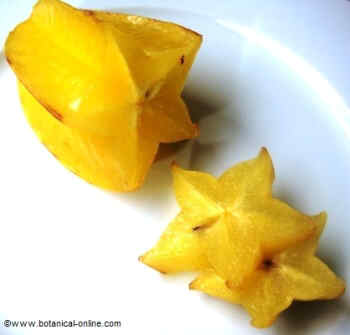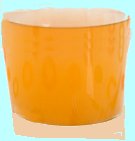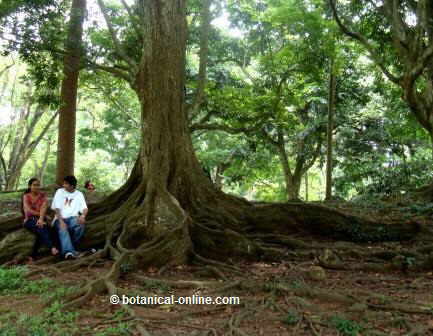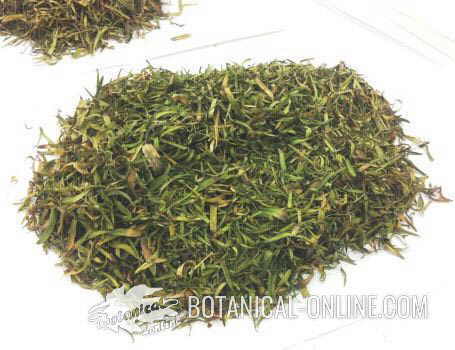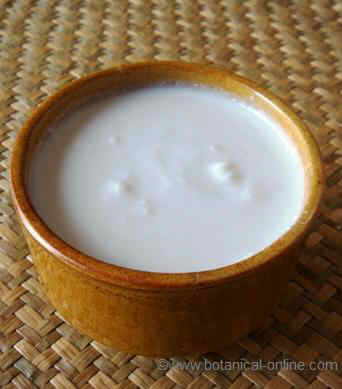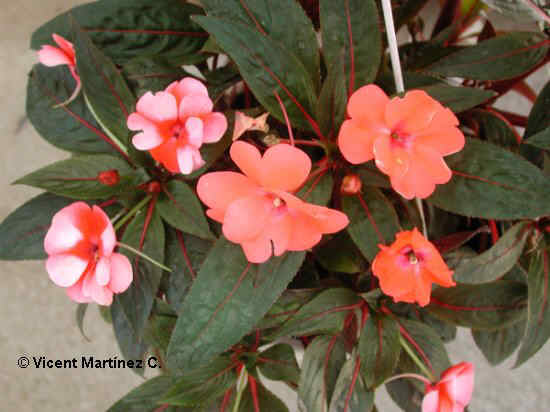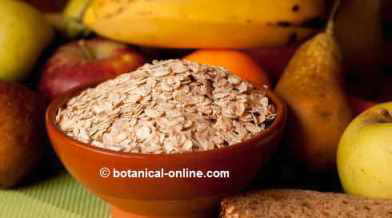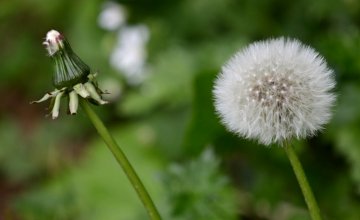Contents
HOW TO GROW MULLEIN
How is mullein like?
Mullein (Verbascum thapsus) is a large biennial plant, native to uncultivated land, embankments, fallows, stony soils, wastelands, rivers, forests and prairies.
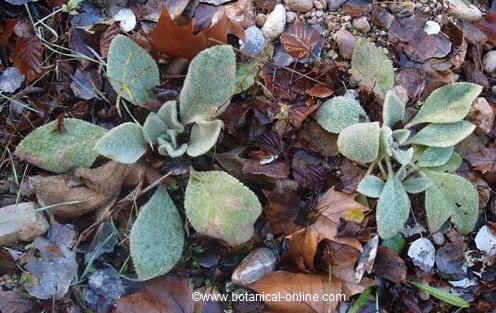
Photograph of two mullein plants at the first year of growth (Verbascum thapsus).
– Stem erect, sometimes branched, with dense hairiness that covers it.
– Its leaves are alternate, simple and petiolate. The limb is oval, grooved and the whole leaf is hairy. The basal leaves are larger and more numerous. As the plant grows, its upper leaves are smaller in size.
– The floral stem, which develops during the second year of growth of the plant, is long and with terminal inflorescence reminiscent of a candle.
– Yellow flowers, the plant blooms between June and August.
Main species of mulleins
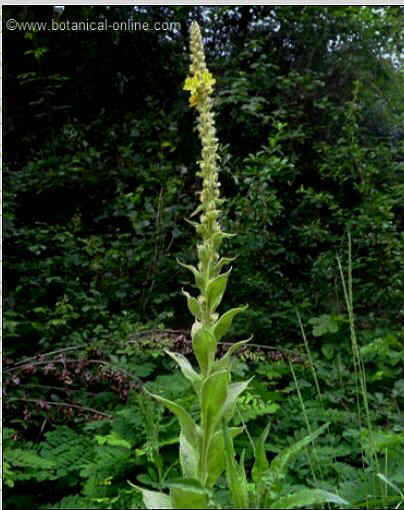
Common mullein (Verbascum thapsus) at the second year of growth, when its floral stem has developed
- Annual mullein (Verbascum boerhavii): This plant blooms in spring, between April and June, unlike other plants of the same species that do in summer. Yellow corolla with purple base and violet stamens.
- White mullein (Verbascum lychnitis): plant very common in mountainous terrain, between 800 and 1,500m. It has a hairiness throughout the plant persistent until flowering (unlike other species in which hairiness can be easily detached). It is distinguished by white or yellow flowers and yellow stamens. It blooms from June to September.
- Black mullein or dark mullein (Verbascum nigrum): plant native to the Mediterranean region, rarely fermented in other places. Leaves broader and darker than common mullein, with purple pilosity and reddish stem. Yellow petals with purple color at the base. Purple stamens. This plant blooms from September to October. Same applications as common mullein.
- Orange mullein (Verbascum phlomoides): common weed in uncultivated lands, originating from the same habitats as common mullein. It is distinguished because it has less pilosity than the common mullein, although it shares its medicinal applications.
- Broad leaf mullein (Verbascum pulverentum): its Latin name pulverulentus means dusty, in reference to the dense hairiness that covers its leaves and that falls in the form of lumps that remember the “dust”. More branched than the common mullein, often shaped like a candlestick. This species is especially common in France. Yellow corollas with orange stamens. Flowers from June to August. Same applications as common mullein.
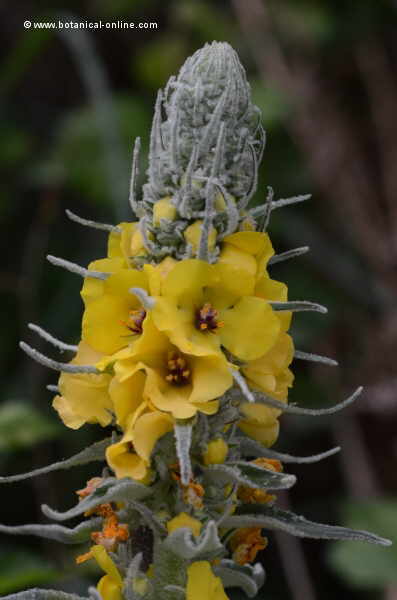
Broad leaf mullein (Verbascum pulverulentum)
- Wavy leaf mullein (Verbascum sinuatum): species with lobulated and showy leaves and large yellow flowers, arranged in a large panicle. The fluff of its leaves is easily detached. It contains more triterpenic saponosides than common mullein, which confers ichthyotoxic properties (toxic to the fish). The Greeks used it to fish.
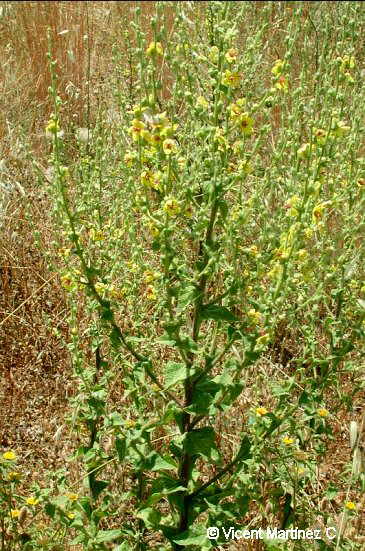
Photo of wavy leaf mullein Verbascum sinuatum L.
- Common mullein (Verbascum thapsus): most popular species of mullein, known for its characteristic inflorescence and used traditionally as medicinal. Plant extensively worked on this website: * More information on the medicinal properties of mullein.
Climate
– Mullein can grow in the shade and full sun, preferring open solar exposure. Its hairy leaves are responsible for maintaining moisture, since the plant requires a lot of sun to grow.
– Resistant to frost. Tolerates very cold temperatures as high mountains, up to -15ºC.
– Altitude of 0 to 1,500m.
Soil
– Soil, limestone and well drained.
– Rich in humus or organic matter, deep and light
Propagation
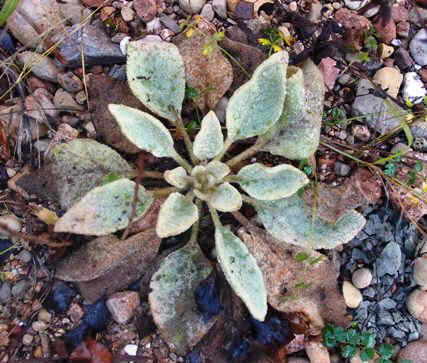
Photograph of the plant at the first year of its growth (Verbascum thapsus)
Seed reproduction
– It is sown in spring or early fall.
– In the domain of seat in autumn or spring, or transplanting in late spring, about the month of March.
– Although it stands out for its large size, the truth is that the first year it only forms a basal rosette, a little more than 60cm. Height.
Propagation by plant division
– It consists of transplanting a piece of plant, coming from an adult plant (2 years), from its root.
– In autumn or mid-February, a bush of a plant is divided from its rhizome. For this we can unearth the adult plant, and divide it into as many rhizomes as it has developed (2-3).
– These roots will become new samples when transplanted.
Propagation by cutting
– The cuttings consist of transplanting a stem of a vigorous plant, so that it can root and forms identical plants to the previous one.
– They are made from stems of the plant, from apical, middle or basal cuts. We must take into account that the cutting is free from any damage, spots or pests.
– We cut the stem to an approximate length of 25-35cm.
Maintenance
– Prepare soil one month before sowing.
– Fertilize with organic matter or compost.
– Regular irrigation, avoiding waterlogging.
Harvest
– The flowers are harvested between June and October, first thing in the morning. They have to be dried in the shade.
– Leaves harvested early in the day are richer in essential oils, while those collected in the afternoon contain more glycosides.
List of species of mullein
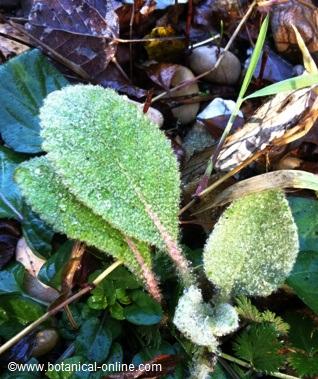
Photograph of the first shoots of mullein plant (Verbascum thapsus)
Verbascum acaule (Bory & Chaub.) Kuntze
Verbascum adeliae Heldr.
Verbascum adenanthum Bornm.
Verbascum adrianopolitanum Podp.
Verbascum anisophylum Murb.
Verbascum arcturus L.
Verbascum argenteum Ten.
Verbascum baldaccii Degen
Verbascum banaticum Schrad.
Verbascum barnadesii Vahl
Verbascum bithynicum Boiss.
Verbascum blattaria L.
Verbascum boerhavii L.
Verbascum boissieri (Heldr. & Sart.) Kuntze
Verbascum botuliforme Murb.
Verbascum bombyciferum Boiss.
Verbascum bugulifolium Lam.
Verbascum chaixii Vill.
Verbascum charidemii Murb.
Verbascum chinense (L.) Santapau
Verbascum chrysanthum Murb.
Verbascum creticum (L.) Cav.
Verbascum cylindrocarpum Griseb.
Verbascum cyleneum (Boiss. & Heldr.) Kuntze
Verbascum daenzeri (Fauché & Chaub.) Kuntze
Verbascum damascenum
Verbascum davidoffii Murb.
Verbascum decorum Velen.
Verbascum delphicum Boiss. & Heldr.
Verbascum densiflorum Bertol.
Verbascum dentifolium Delile
Verbascum dieckianum Borbás & Degen
Verbascum dimoniei Velen.
Verbascum dingleri Mattf. & Stef.
Verbascum dumulosum P.H.Davis
Verbascum durmitoreum Rohlena
Verbascum epixanthinum Boiss. & Heldr.
Verbascum eriophorum Godr.
Verbascum euboicum Murb. & Rech.f.
Verbascum foetidum Boiss. & Heldr.
Verbascum formosum Fisch. ex Schrank
Verbascum friedrichsthalianum Kuntze
Verbascum georgicum Benth.
Verbascum glabratum Friv.
Verbascum glandulosum Delile
Verbascum gnaphalodes M.Bieb.
Verbascum graecum Heldr. & Sart. ex Boiss.
Verbascum guicciardii Heldr. ex Boiss.
Verbascum halacsyanum Sint. & Bornm. ex Halácsy
Verbascum haussknechtii Heldr. ex Hausskn.
Verbascum hervieri Degen
Verbascum herzogii Bornm.
Verbascum humile Janka
Verbascum hypoleucum Boiss. & Heldr.
Verbascum jankaeanum Pancic
Verbascum juruk Stef.
Verbascum laciniatum (Poir.) Kuntze
Verbascum lagurus Fisch. & C.A.Mey.
Verbascum lanatum Schrad.
Verbascum lasianthum Boiss. ex Benth.
Verbascum leianthum Benth.
Verbascum leucophylum Griseb.
Verbascum levanticum I.K.Ferguson
Verbascum litigiosum Samp.
Verbascum longifolium Ten.
Verbascum longirostris (Murb.) Huber-Morath
Verbascum lychnitis L.
Verbascum macedonicum Kosanin & Murb.
Verbascum macrurum Ten.
Verbascum malophorum Boiss. & Heldr.
Verbascum mucronatum Lam.
Verbascum nevadense Boiss.
Verbascum nicolai Rohlena
Verbascum nigrum L.
Verbascum niveum Ten.
Verbascum nobile Velen.
Verbascum gypsicola Vural & Aydoğdu
Verbascum olympicum Boiss.
Verbascum orientale (L.) Al.
Verbascum orphanideum Murb.
Verbascum ovalifolium Donn ex Sims
Verbascum paniculatum Wulf.
Verbascum pelium Halácsy
Verbascum pentelicum Murb.
Verbascum pestalozzae Murb.
Verbascum phlomoides L.
Verbascum phoeniceum L.
Verbascum pinnatifidum Vahl
Verbascum pseudonobile Stoj. & Stef.
Verbascum pulverulentum Vill.
Verbascum purpureum (Janka) Hub.-Mor.
Verbascum pycnostachyum Boiss. & Heldr.
Verbascum pyramidatum M.Bieb.
Verbascum reiseri Halácsy
Verbascum roripifolium (Halácsy) I.K.Ferguson
Verbascum rotundifolium Ten.
Verbascum rupestre (Davidov) I.K.Ferguson
Verbascum samniticum Ten.
Verbascum scardicola Bornm.
Verbascum shahsavarensis sotoodeh
Verbascum siculum Tod. ex Lojac.
Verbascum sinaiticum
Verbascum sinuatum L.
Verbascum songaricum Schrenk.
Verbascum spathulisepalum Greuter & Rech. f.
Verbascum speciosum Schrad.
Verbascum spectabile M.Bieb.
Verbascum spinosum L.
Verbascum syriacum
Verbascum tzar-borisii (Davidov ex Stoj.) Stef.-G at.
Verbascum thapsus L.
Verbascum undulatum Lam.
Verbascum vandasii (Rohlena) Rohlena
Verbascum virgatum Stokes
Verbascum viridissimum Stoj. & Stef.
Verbascum widemannianum Fisch. & Mey.
Verbascum xanthophoeniceum Griseb.
![]() More information on mullein.
More information on mullein.

